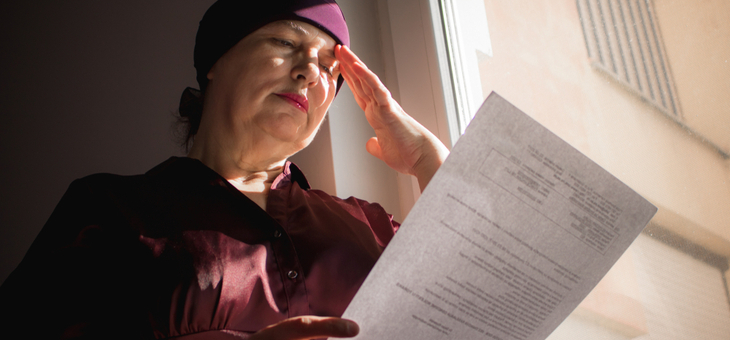New research confirms that cancer treatment can be twice as expensive for patients with private health insurance.
A paper released by the Medical Journal of Australia (MJA) on Monday revealed that cancer patients with private health insurance living in an outer metropolitan area were paying an average of $4670 in gap costs for their treatment. Patients without insurance in the same area paid an average of $2510.
“Contrary to popular belief, there is no direct link between the cost and quality of care,” the report’s authors concluded.
“The higher out-of-pocket expenses for people with private health insurance or undergoing surgery indicate the importance of healthcare funding arrangements and the magnitude of the costs borne by patients.”
In 2019, Professor Christine Paul and Dr Liz Fradgley, from the Hunter Medical Research Institute, found“those with private health insurance faced double the out-of-pocket expenses as those without it, and ultimately a greater financial impact.”
“One in three cancer patients in their research had out-of-pocket costs that were higher than expected and ranged from hundreds of dollars to over $50,000.
“Privately insured patients may be charged not only the private health insurance excess and the gap between coverage and a surgeon’s bill, but also costs associated with anaesthetic, diagnostic procedures or hospital stays.”
A third of their respondents needed extra financial support from family or friends.
Cancer charities have urged doctors and healthcare providers to properly inform patients about the cost of cancer treatment.
Professor Sanchia Aranda, CEO of the Cancer Council Australia, said that financial information was particularly important for those Australians with cancer who were already financially disadvantaged.
“The poorest members of our community are 33 per cent more likely to die from cancer than the richest and so clearly money is a key factor influencing cancer inequalities.
“We know that people with cancer borrow money, access their super, sell investments, re-mortgage their house, increase their credit card limits and increase their partner’s working hours to cover the cost of treatment and everyday expenses.”
The Consumer Health Forum’s Out of Pocket Pain survey found “a system characterised by high cost, complexity and confusion”.
Of 1200 respondents, one in six reported costs had a significant impact on their lives, some forced to draw down on their superannuation. More than one third of respondents said that significant out-of-pocket costs had not been discussed with them.
“The survey results graphically highlight a fundamental dilemma now besetting the public/private health system: Australians facing heavy medical bills are now shocked to find that the private insurance they have paid so much for over many years exposes them to yet more expense when they require treatment,” the report’s authors wrote.
The Grattan Institute’s Mr Stephen Duckett reported that private health insurance premiums could be cut by up to 10 per cent if private hospitals stopped “over-servicing”.
“A handful of ‘greedy’ doctors charge their patients more than twice the official Medicare Benefits Schedule fee.
“Only about seven per cent of all in-hospital medical services are billed at this rate, yet these bills account for almost 90 per cent of all out-of-pocket costs for private hospital patients – and patients are often not told of these costs in advance.
“Some doctors also charge ‘booking fees’ on top of procedure and consultation fees. These covert fees are not recoverable from private health insurance or Medicare – the patient is left to foot the bill.
“The higher fees have nothing to do with the skill of the surgeon or the adequacy of the Medicare Benefits Schedule. The small minority of specialists who charged more than twice the schedule fee are simply greedy.”
Mr Duckett wrote that making private health insurance more efficient could save $2 billion each year and fund cuts in private health insurance premiums.
“Capturing these savings and passing them on to patients in the form of lower insurance premiums could save private health care in Australia.”
Cancer Council advice for patients with private health insurance:
- Ask your doctor for a written estimate of his or her fees (and if there will be a gap), who else will care for you (e.g. an anaesthetist or surgical assistant), and how you can find out what their fees will be.
- Ask your private health fund what costs it will cover and what you’ll have to pay – some funds only pay benefits for services at certain hospitals.
- Ask the hospital if there are any extra treatment and medicine costs.
- Ask how much you will have to pay for out-of-hospital services when making an appointment with a doctor or service provider.
- Ask your healthcare provider for a written quote for fees. If you receive a much higher bill, show them the quote and ask why the bill is higher.
- Ask your GP to refer you to a doctor in the public system.
- Some newer treatment options can be very expensive and may not offer more benefits than traditional approaches. Ask if other treatments would be as effective but cost less.
- If your doctor charges more than the schedule fee, ask if he/she will consider an exception in your case.
- If you can’t afford treatment, ask your doctor if the costs are negotiable – some doctors may agree to reduce their fees.
- Find out if you can pay in instalments or have more time to pay your bill. Check if you will be charged interest.
Does this research further erode your faith in the value of private health cover? Have you reduced or dropped your cover in the past year? Has COVID-19 changed your thinking about private cover?
If you enjoy our content, don’t keep it to yourself. Share our free eNews with your friends and encourage them to sign up.
Related articles:
The risks of COVID-19 inactivity
Health insurance complaints soar
Health insurance cop fires blanks

